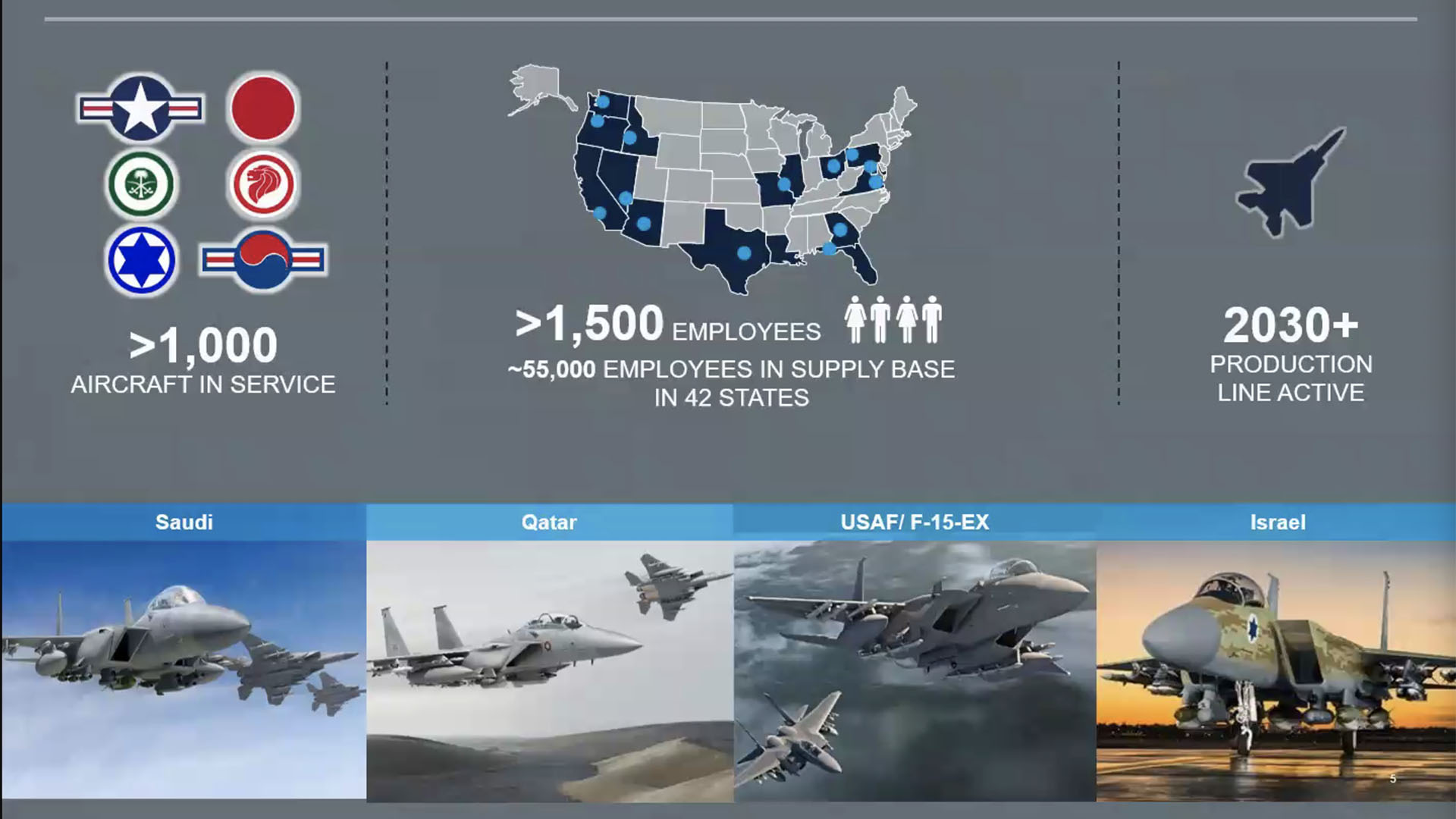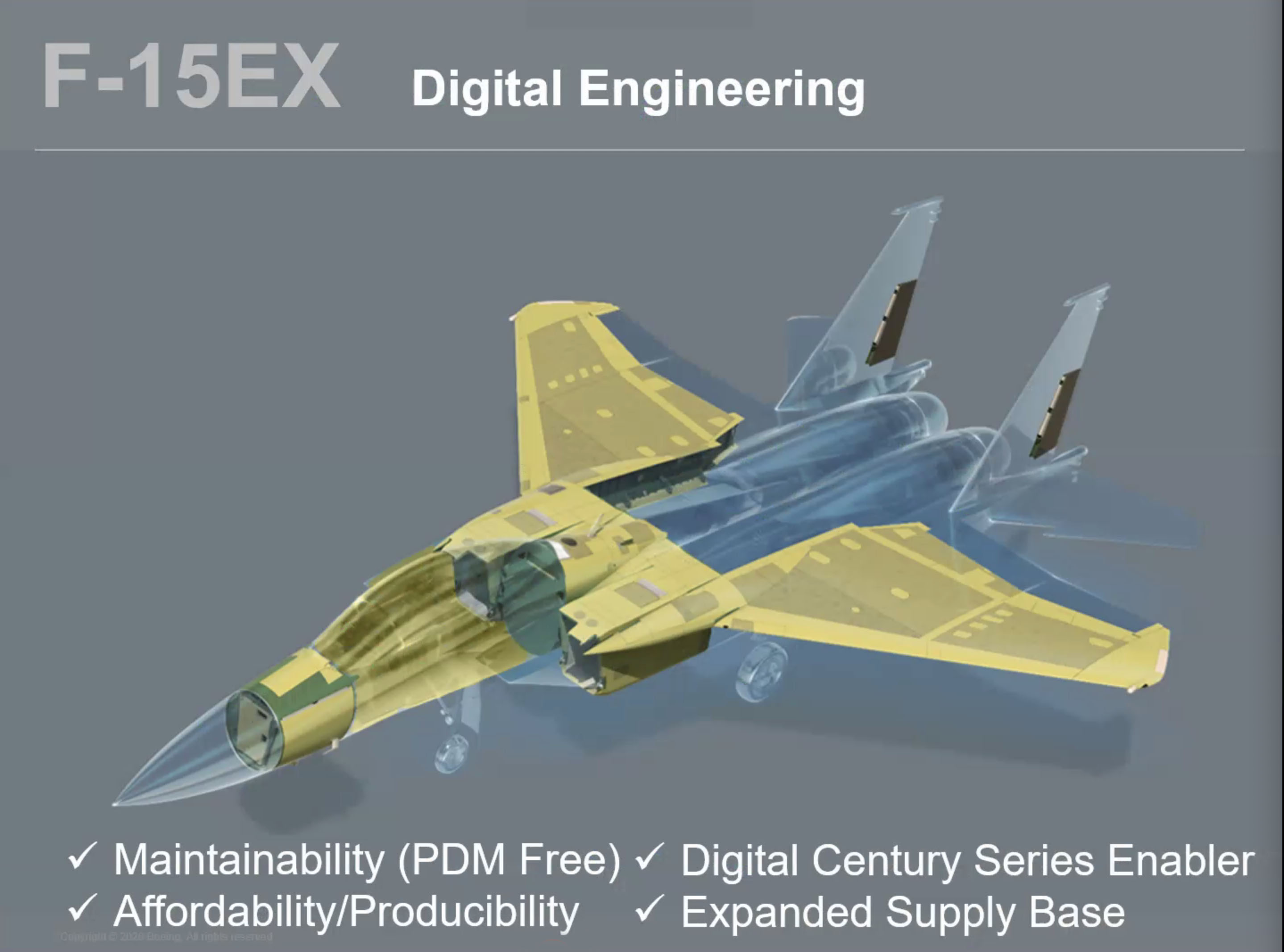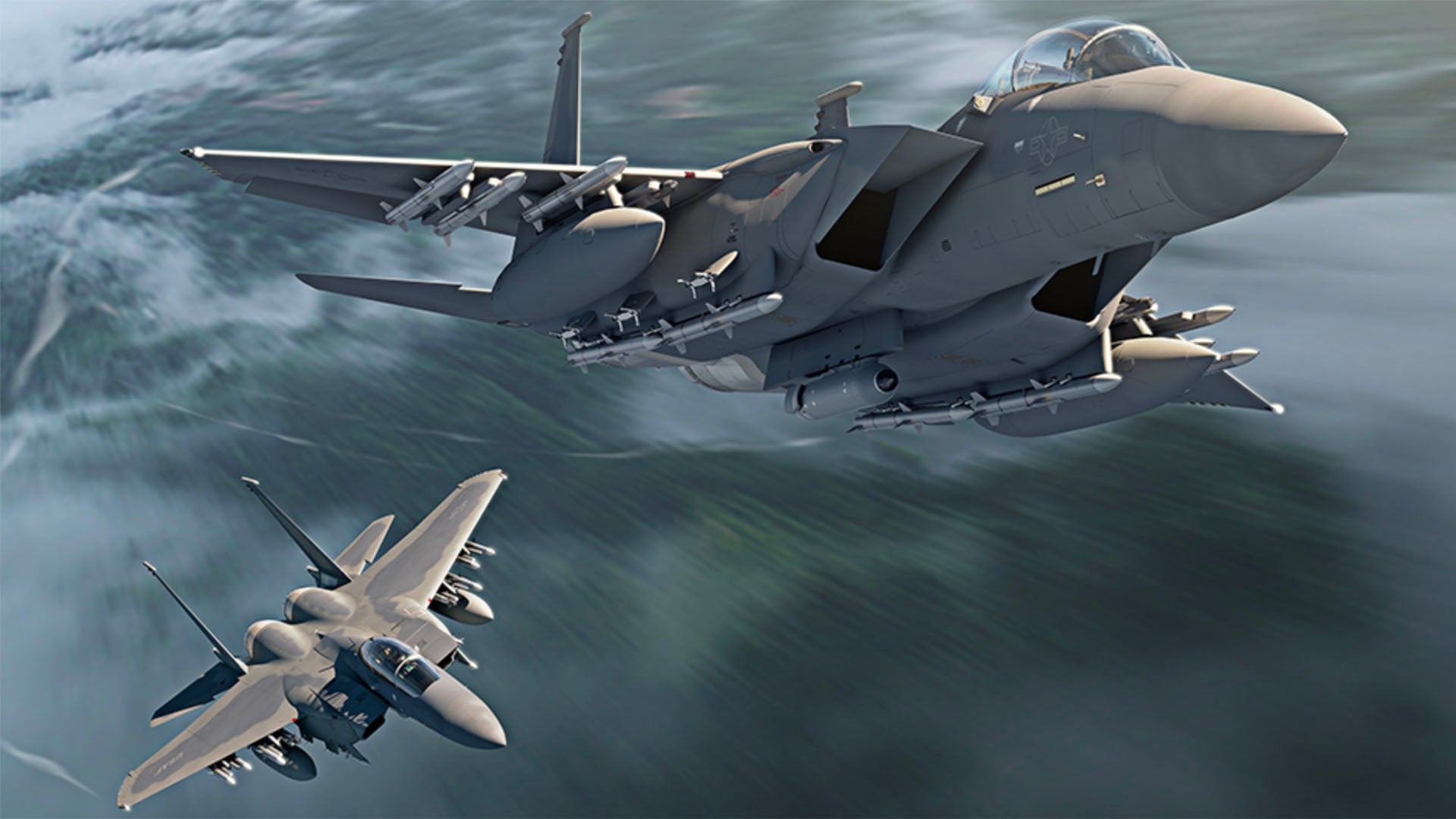Boeing is lining-up big new potential deals with Israel and India that could keep variants of the F-15 Advanced Eagle in production for the next decade and beyond. Prat Kumar, Boeing’s Vice President and Program Manager for the F-15, said the company was in the process of responding to a request for information from Israel for up to 25 new Advanced F-15s, plus upgrades for 25 existing F-15I aircraft. He said Boeing expected to see the next steps in the potential requirement over the “next year or so.”
Boeing is also eyeing India as another potential customer for its slowly-evolving 144-fighter jet requirement. Kumar said the firm was in the process of requesting a marketing license from the U.S Government to start discussions with India, adding that he is not sure if the F-15 is “in the sweet spot” for the requirement. India is looking at solutions from a range of manufacturers from the around world, including Boeing’s own F/A-18E/F Super Hornet.
These revelations come hot on the heels of the huge U.S. Air Force deal announced earlier this week that could see Boeing building as many as 200 F-15EX fighters. The contract includes $1.2 billion for an initial eight aircraft in Lot 1, to be followed by a further 76 in the five-year Future Years Defense Program (FYDP). The USAF will purchase a projected minimum of 144 F-15EX jets, with the associated indefinite-delivery/indefinite-quantity contract having a ceiling of $22.89 billion that would cover a maximum of 200 new Eagles.

The plan covers the replacement of most of the USAF’s remaining F-15C/D Eagles in service. Kumar said Boeing had anticipated the contract for some time and that the company had been “leaning-in” to be ready to deliver the first pair of jets by the first quarter of 2021.
The USAF has laid out dual objectives for the F-15EX. To quickly recapitalize the F-15C/D fleet and to incur the lowest possible training burden in doing so. In doing so, the F-15EX is the most advanced Eagle to date, which builds on the F-15QA that is in production for Qatar. The new USAF jets feature the same advanced fly-by-wire design that was pioneered in the F-15SA for Saudi Arabia. This opened up wing stations 1 and 9 to permit increased stores carriage. The Qatari jets are the first to get an array of new features, including a new wide-area display, low-profile HUD, and an all-new wing that saves weight and increases longevity. The F-15EX is supposed to have a useful life of an amazing 20,000 flight hours.

Kumar confirmed the F-15EX will be fitted with the same Raytheon AN/APG-82 Active Electronically Scanned Array radar that has been retrofitted to the USAF F-15E fleet. Similarly, the new aircraft will feature the Advanced Display Core Processor II mission computer and Suite 9 Operational Flight Program, which also brings them into line with the latest Strike Eagle standard.
A new 11×19-inch Large Area Display is also fitted to front and back cockpits, although the USAF initially expects to fly the aircraft with a single pilot. The rear cockpit will be fully operational, and Kumar said the space and capability of the rear seat has other possible uses, which you can read more about here. The Boeing executive also discussed the potential for adding artificial intelligence to aid F-15EX crews in the future.

Boeing expects the F-15EX to carry the new Lockheed Martin Legion infra-red search-and-track (IRST) pod as it is a current USAF program of record. As a multi-role aircraft, Kumar also noted that the F-15EX could also be fitted with the LANTIRN navigation pod, Tiger Eyes IRST, and Sniper targeting pod under the intakes if the USAF so desired. This combination has been adopted by Saudi Arabia, Korea, and Qatar for its advanced F-15s.

Elements of the F-15 Advanced Eagle are transferable into existing Eagles as part of an upgrade plan. Saudi Arabia is upgrading its F-15S aircraft to F-15SR standard, which incorporates most elements of the F-15SA. However, the fly-by-wire control system is unique to the newer F-15s and prohibits older airframes from the added capacity of opening up the two additional wing stations.
Israel could follow Saudi Arabia by upgrading its existing F-15Is and Boeing was also working with the U.S Government to offer an upgrade to Japan for its F-15Js. According to Kumar, this would retrofit the Japan Air Self-Defense Force aircraft with similar capabilities as the F-15EX, such as the enhanced cockpit, new radar, and electronic warfare suite.
Boeing expects that the first six F-15EX jets will join a USAF development and operational flight-test program at Eglin Air Force Base, in Florida. This will include expanding the test fleet assigned to the new Eagle Passive/Active Warning and Survivability System (EPAWSS), which is being developed as a retrofit for existing F-15Es and will also be an integral part of the F-15EX. Kumar said EPAWSS is “included in the price” for a new F-15EX.
Boeing says the F-15EX is being developed as a “pathfinder” for the USAF’s new “Digital Century Series” concept. This is designed to rapidly evolve new platforms through digital engineering and build future fighters in an entirely different manner.

Boeing is using the EX to modernize the way an airframe is built, in this case using digital engineering to precisely model parts in 3D and therefore reduce touch labor on the assembly line. Kumar said Boeing’s T-7A Red Hawk advanced training aircraft was instrumental in developing these concepts and that these have been “deployed in F-15 where applicable.” Boeing has digitally engineered the nose barrel section of the F-15EX and the same technology is being applied to the wings, with the forward fuselage to follow.
Similarly, open core mission system architecture is designed to enable Boeing to test new capabilities, sensors, and weapons in a faster and more efficient way. Kumar said the challenge from DevSecOps, a new USAF software development initiative, is to migrate to an agile environment for software upgrade releases and adding third party systems. This approach will pay dividends when it comes to configuring aircraft for manned/unmanned teaming.
The USAF has not purchased Boeing’s Advanced Missile and Bomb Ejection Rack (AMBER) that could add weapons capacity for the F-15EX. Kumar said the USAF is “happy” with the current dozen air-to-air weapons stations. However, no secret is being made of the F-15EX’s ability to carry a large store, such as a hypersonic missile, on its centerline station, which The War Zone posited in detail when it broke the F-15X story two years ago.
“The F-15EX carries more weapons than any other fighter in its class and can launch hypersonic weapons up to 22 feet long and weighing up to 7,000 pounds,” the Boeing statement said when the USAF contract was announced. Kumar said the centerline can carry “fuel, weapons, or advanced pylons for large stores under development and in flight-test, the capability exists in the jet.” He wouldn’t talk specifics regarding hypersonic weapons, but it’s clear the Air Force’s newest fighter is much more than just a straight swap for old Eagles.
Both domestically and internationally, the future is looking very bright for the F-15.
Contact the author: Jamie@thedrive.com
